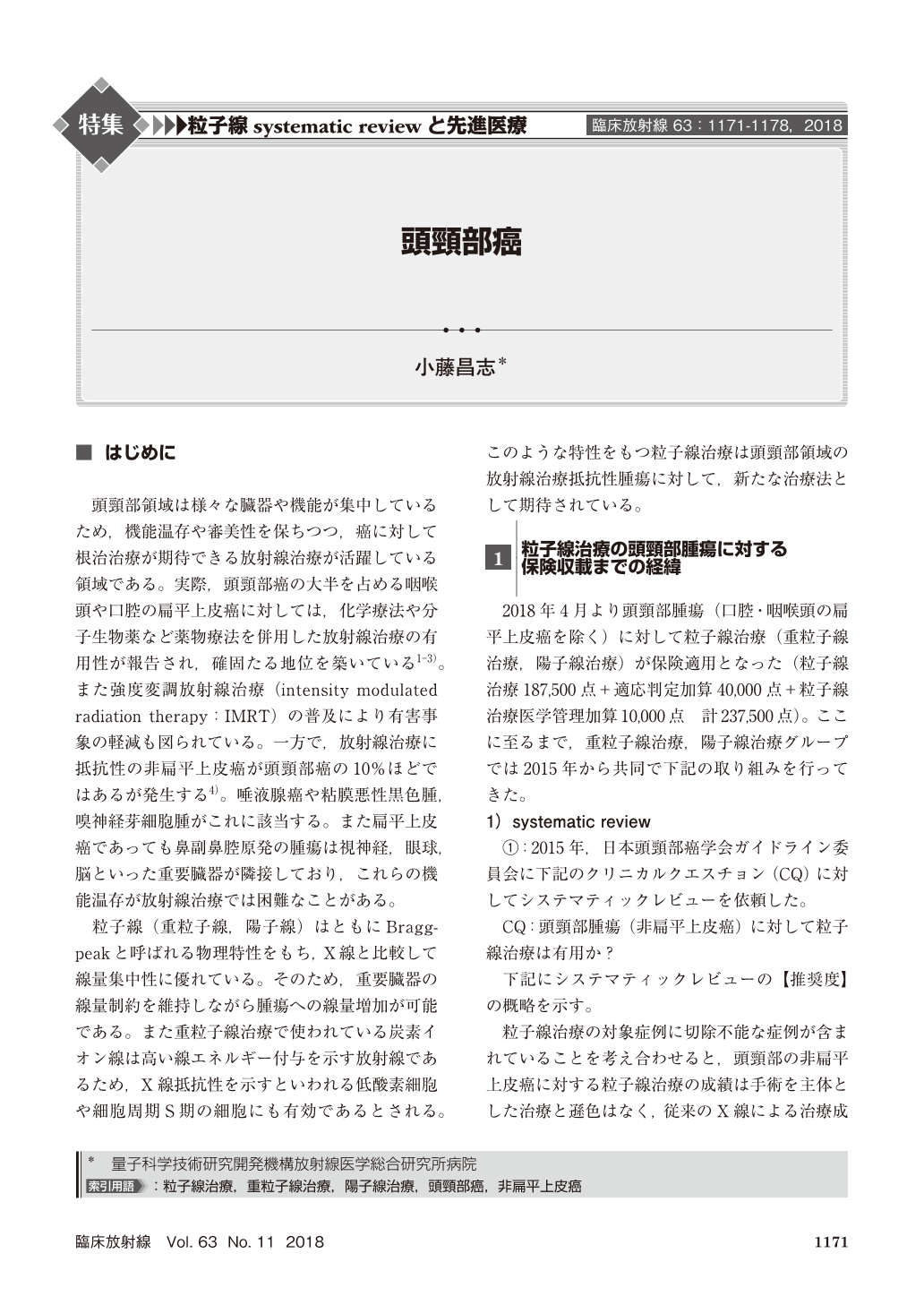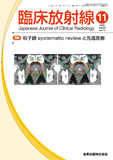Japanese
English
- 有料閲覧
- Abstract 文献概要
- 1ページ目 Look Inside
- 参考文献 Reference
頭頸部領域は様々な臓器や機能が集中しているため,機能温存や審美性を保ちつつ,癌に対して根治治療が期待できる放射線治療が活躍している領域である。実際,頭頸部癌の大半を占める咽喉頭や口腔の扁平上皮癌に対しては,化学療法や分子生物薬など薬物療法を併用した放射線治療の有用性が報告され,確固たる地位を築いている1-3)。また強度変調放射線治療(intensity modulated radiation therapy:IMRT)の普及により有害事象の軽減も図られている。一方で,放射線治療に抵抗性の非扁平上皮癌が頭頸部癌の10%ほどではあるが発生する4)。唾液腺癌や粘膜悪性黒色腫,嗅神経芽細胞腫がこれに該当する。また扁平上皮癌であっても鼻副鼻腔原発の腫瘍は視神経,眼球,脳といった重要臓器が隣接しており,これらの機能温存が放射線治療では困難なことがある。
Radiotherapy is a definitive treatment option for squamous cell carcinomas of the head and neck. However, tumors arising in the head and neck region are of a variety of histological types, including adenoid cystic carcinoma, mucosal malignant melanoma, and adenocarcinoma. Most of these tumors are resistant to radiotherapy. Charged particles including carbon ions and protons provide a higher degree of physical selectivity because they have a finite range in tissue. Therefore, charged particle therapies can potentially control radio-resistant tumors while sparing normal tissues. Charged particle therapies for radioresistant tumors of the head and neck were applied to the health care insurance in Japan on April 2018.

Copyright © 2018, KANEHARA SHUPPAN Co.LTD. All rights reserved.


